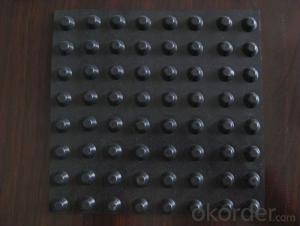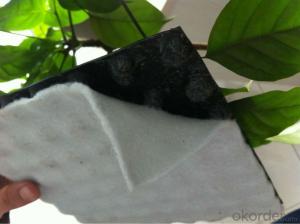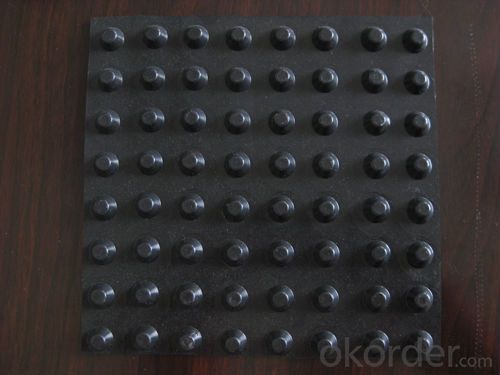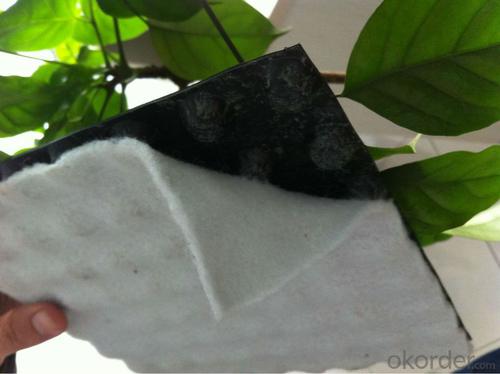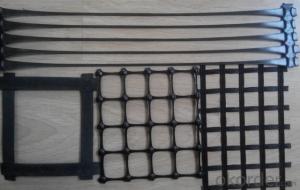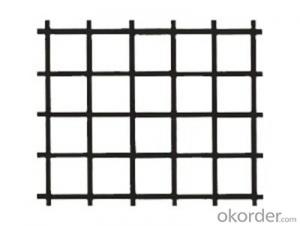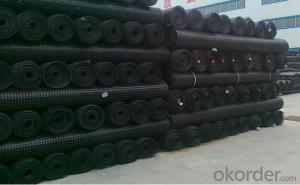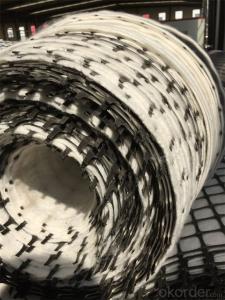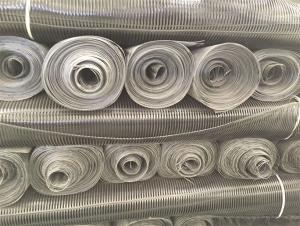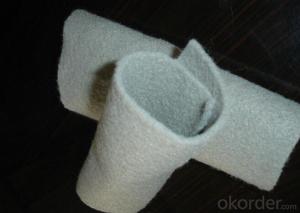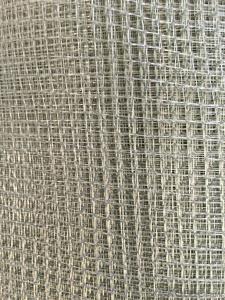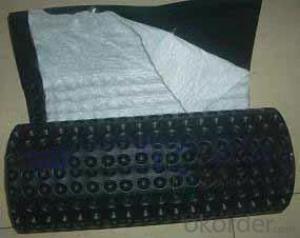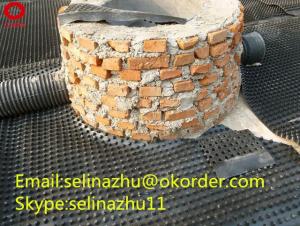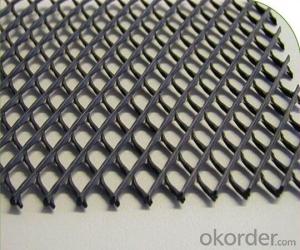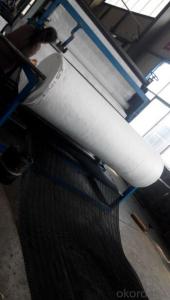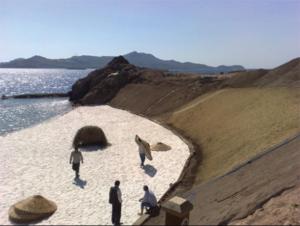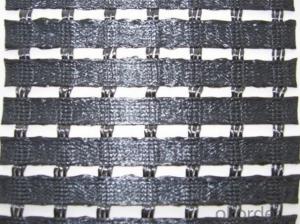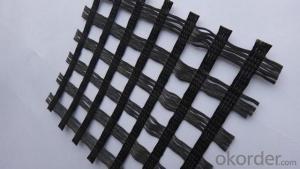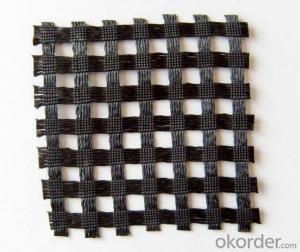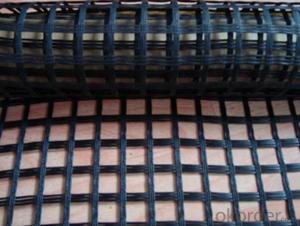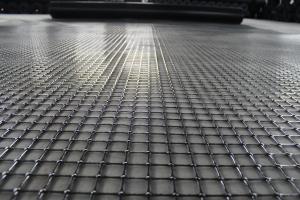Geocells Price Dimpleboards / Strip Drains / Sheet Drains / Geo Composite
- Loading Port:
- Qingdao
- Payment Terms:
- TT OR LC
- Min Order Qty:
- 1000 m
- Supply Capability:
- 50000 m/month
OKorder Service Pledge
OKorder Financial Service
You Might Also Like
Specifications
dimpleboards
1.Geotextile bonded to a dimpled sheet
2.Lightweight and easy to use
3. be easily cut and joined
dimpleboards / strip drains / sheet drains / geo composites
About the Goecomposite drainage board / drainage sheet
It is comprised of a dimpled high crush resistant plastic core with a single layer geotextile filter bonded to the core to provide a drainage sheet that can collect and filter water ingressing from backfill soils.
FEATURES AND BENEFITS
1) Highly permeable Geotextile bonded to a dimpled sheet drainage board
2) Filters water and allows free drainage
3) Protects waterproof coatings from soil and rock damage
4) Resistant to all commonly occurring ground chemicals
5) Lightweight and easy to use
6) Reduces the quantity of expensive drainage aggregate
7) Can be easily cut and joined
Application
1) Retaining walls
2) Basement walls
3) Reduction in hydrostatic pressure behind retaining walls
4) Additional protection to waterproofing membranes
5) Horizontal drainage for roof tops and planter boxes
- Q: Can geogrids be used in pipeline construction?
- Yes, geogrids can be used in pipeline construction. Geogrids are commonly used as a reinforcement material in pipeline construction to provide stabilization and prevent soil movement. They help to distribute loads and provide added support to the pipeline, improving its overall performance and longevity.
- Q: How much is the horizontal overlap length of the steel plastic geogrid
- The double lap length is 50cm, and the steel nails. Geotextile lap length is 50cm to 1m
- Q: How do geogrids improve the performance of retaining walls in earthquake-prone areas?
- Geogrids improve the performance of retaining walls in earthquake-prone areas by providing reinforcement and stability. These high-strength geosynthetic materials are placed within the soil behind the retaining wall, which helps to distribute the forces generated during an earthquake more evenly. This reduces the pressure on the wall and enhances its resistance to lateral movement and potential failure. Geogrids also increase the overall strength and load-bearing capacity of the soil, making the retaining wall more resilient against seismic forces.
- Q: What are the load-bearing capacities of geogrids?
- The load-bearing capacities of geogrids can vary depending on factors such as the type of geogrid, its design, and the specific application. Generally, geogrids have high tensile strength and are capable of withstanding heavy loads. However, it is important to consult the manufacturer's specifications and engineering guidelines for accurate load-bearing capacity information for a particular geogrid.
- Q: How do geogrids improve the performance of mechanically stabilized slopes under dynamic loading?
- Geogrids improve the performance of mechanically stabilized slopes under dynamic loading by providing reinforcement and enhancing the soil's strength and stability. They distribute the applied forces more evenly, reducing stress concentrations and preventing slope failure. Additionally, geogrids increase the friction between soil particles, reducing lateral movement and maintaining slope integrity even during dynamic loading events such as earthquakes or heavy traffic.
- Q: Can geogrids be used in shoreline protection against wave action?
- Yes, geogrids can be used in shoreline protection against wave action. Geogrids are commonly used to stabilize soil and prevent erosion. When installed along the shoreline, geogrids can help absorb the energy of the waves, reduce erosion, and provide protection to the shoreline. They are often combined with other materials, such as rocks or vegetation, to create an effective barrier against wave action.
- Q: What is the difference between nonwoven geotextiles and geotextile? What is their role?
- Effect: usually used for maintenance, reverse filtration, etc..
- Q: What is the effect of installation damage on geogrid performance?
- Installation damage can significantly affect geogrid performance. Damage during installation, such as tears, punctures, or stretching, can compromise the integrity and functionality of the geogrid. These damages can reduce its load-bearing capacity, limit its ability to provide soil reinforcement, and decrease its overall effectiveness in stabilizing the soil. Therefore, proper installation techniques and careful handling are essential to maintain the geogrid's performance and ensure its long-term functionality.
- Q: What is the typical geogrid roll weight for specific applications?
- The typical geogrid roll weight for specific applications can vary depending on factors such as the type of geogrid, the intended use, and the desired strength requirements. However, geogrid rolls commonly range from 50 to 150 pounds for standard applications.
- Q: What is the difference between uniaxial and biaxial geogrids?
- Uniaxial geogrids have strength and stiffness in one direction, making them suitable for applications requiring reinforcement in a single direction. Biaxial geogrids, on the other hand, have strength and stiffness in two perpendicular directions, allowing for reinforcement in multiple directions. This makes biaxial geogrids more versatile and applicable to a wider range of projects.
Send your message to us
Geocells Price Dimpleboards / Strip Drains / Sheet Drains / Geo Composite
- Loading Port:
- Qingdao
- Payment Terms:
- TT OR LC
- Min Order Qty:
- 1000 m
- Supply Capability:
- 50000 m/month
OKorder Service Pledge
OKorder Financial Service
Similar products
Hot products
Hot Searches
Related keywords
